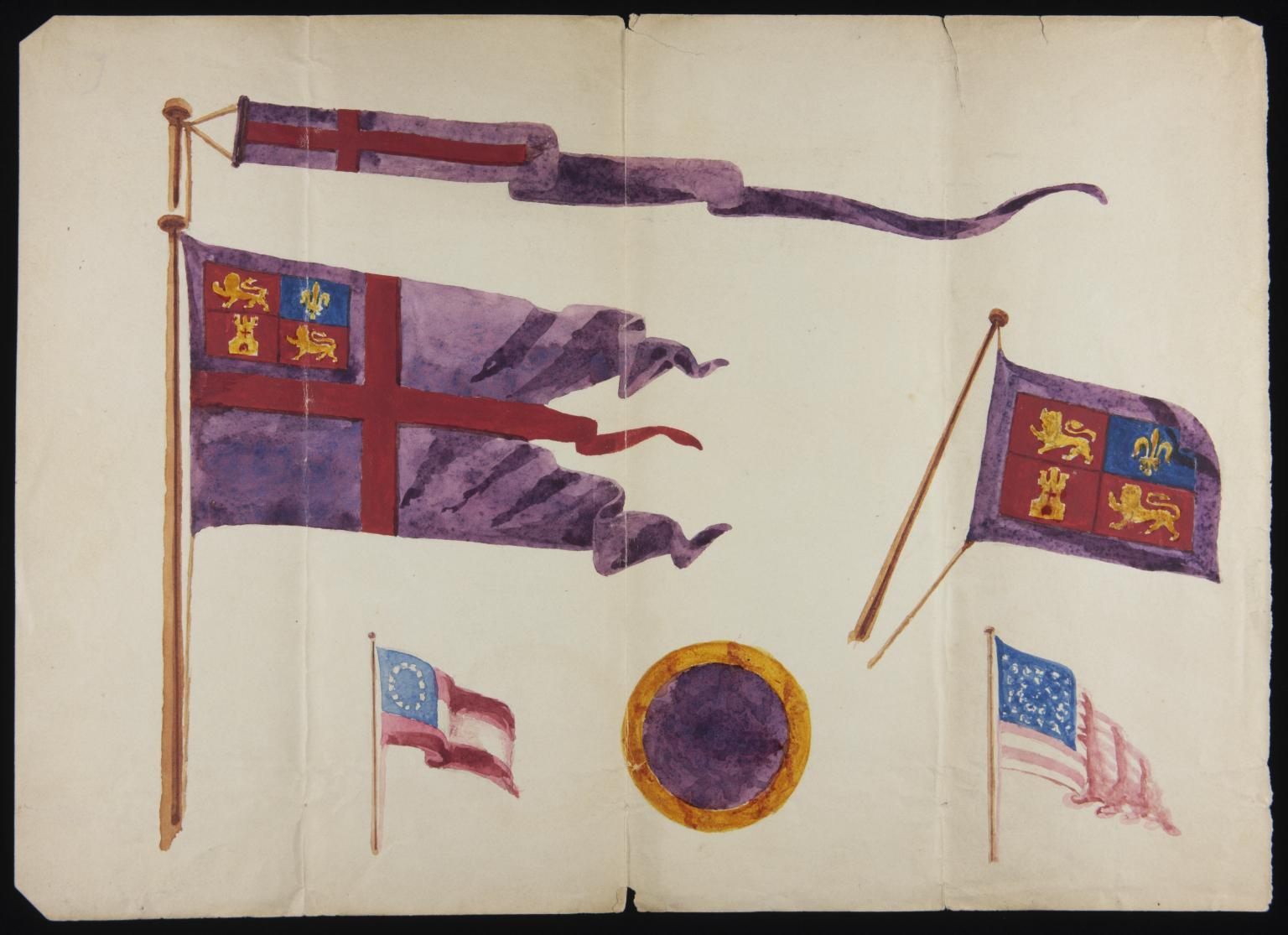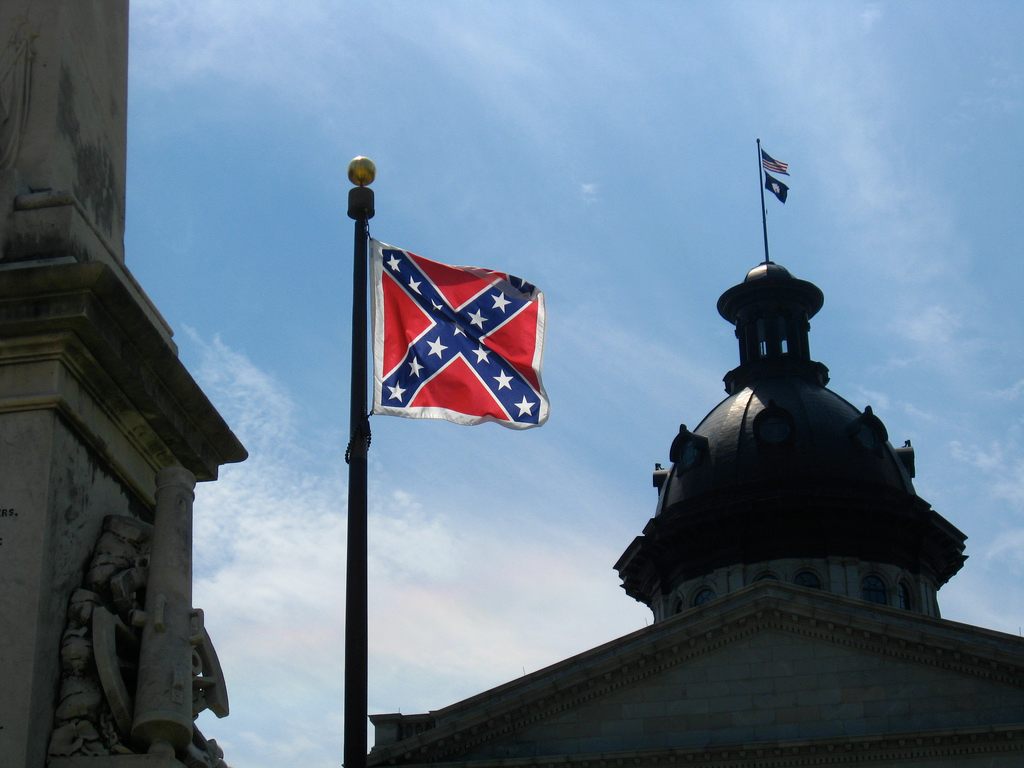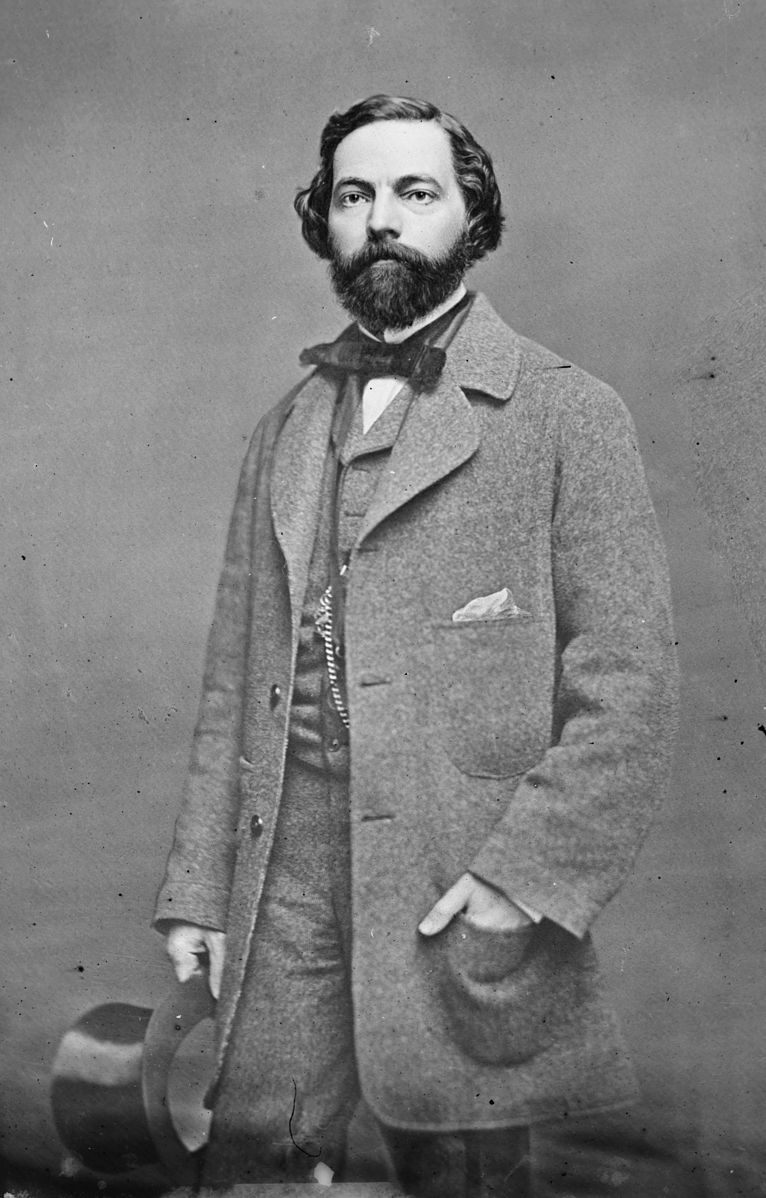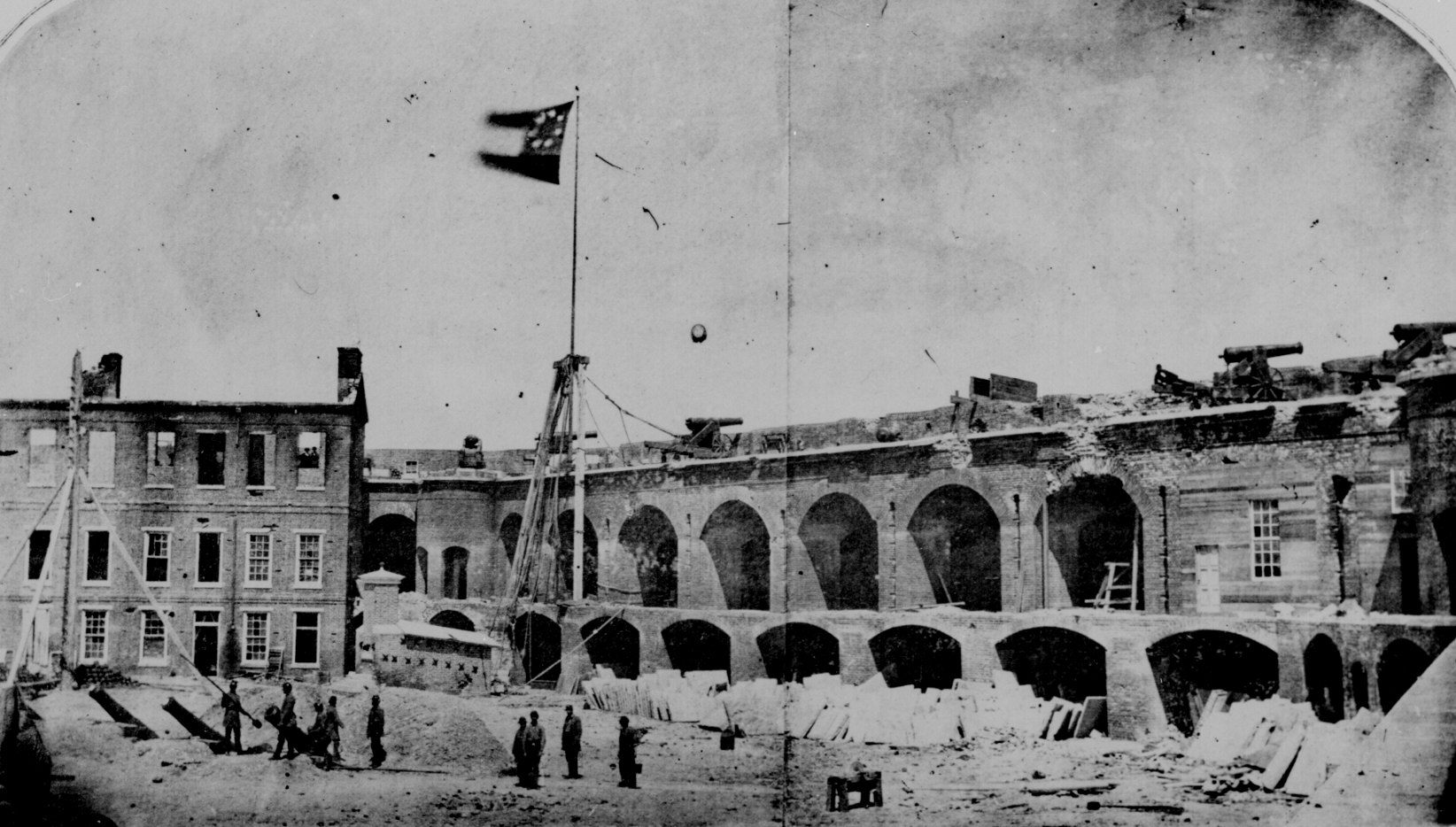The Lesser-Known History of the Confederate Flag
 Some designs “as unlike as possible the Stars and Stripes,” nonetheless rejected by the Committee on the Flag and Seal in 1862. (Image: WikiCommons/Public Domain)
Some designs “as unlike as possible the Stars and Stripes,” nonetheless rejected by the Committee on the Flag and Seal in 1862. (Image: WikiCommons/Public Domain)
“We are not going to allow this symbol to divide us any longer,” said Governor Nikki Haley, speaking of the Confederate flag flying above the South Carolina statehouse at a press conference yesterday.
But what, exactly, is that flag symbolizing? Those who want to take it down point towards its reappropriation, in more recent years, by segregationist groups, the Ku Klux Klan, and other perpetrators of racial violence, like accused Charleston gunman Dylann Roof. The people who want to keep it flying say it stands, instead, for South Carolinian values—heritage, pride, and history.
Historically, though, the flag meant something very different.
The flag that many now consider the “Confederate flag” is just one of many designs the Confederacy used over its four-year tenure—there were three state flags and numerous battle flags. The design that hangs in South Carolina was never actually one of those state flags. And if you look at its particular history, it becomes clear that those whom its supporters supposedly seek to honor—the flag’s designer, the soldiers who fought under it, and the Confederates who flew it—would probably not recognize its current use.
In fact, if you consider how they thought of their own flags, it starts to seem likely that they might be among the first to take it down.
 The Confederate Battle Flag over the South Carolina Capital in 2008. (Photo: Eyeliam/Flickr CC BY 2.0)
The Confederate Battle Flag over the South Carolina Capital in 2008. (Photo: Eyeliam/Flickr CC BY 2.0)
All parties can agree that the Confederate flag that flies above the South Carolina statehouse grounds is very, very difficult to lower.
For one thing, it’s padlocked to its pole—a decision that has seemed somewhat shortsighted since last Wednesday, when the state and national flags were taken to half mast to honor the victims of the AME church shooting in Charleston. For another, thanks to the South Carolina Heritage Act of 2000, the flag cannot be moved without two-thirds approval from both the state Senate and the state House of Representatives. Since getting this approval requires convening meetings of each, the Confederate flag will likely be fluttering in its controversial place for many more months.
In some ways, this is an old fight, although not perhaps for the reasons you’d think. “The battle over the battle flag represents one of the most intensive and extensive ongoing public dialogues about U.S. history,” says historian John M. Coski in The Confederate Battle Flag: America’s Most Embattled Emblem, his comprehensive 2009 book on the subject.
Flags meant a lot to the Confederates. After the first seven states seceded, one of the first things they did was appoint a Committee on the Flag and Seal, chaired by South Carolina’s William Porcher Miles. When they sent out a public call for suggestions, the Committee was overwhelmed by entreaties to “preserve the principal features of the Stars and Stripes,” so as to not let the Union “monopolize” a symbol that still held power for both sides.
It “does not represent to the world [the] oppressions & wrongs [done to us],” said one letter-writer, “but the independance [sic] & prosperity of a great country.” In response, the Committee commissioned the “Stars and Bars”—two thick red stripes with white in the middle, and a blue field in the top left corner with a circle of stars. This served as the official flag of the Confederacy for a little over two years, from 1861 to 1863.
 William Porcher Miles, designer and champion of the Confederate Battle Flag. (Photo: WikiCommons/Public Domain)
William Porcher Miles, designer and champion of the Confederate Battle Flag. (Photo: WikiCommons/Public Domain)
It also made committee chairman Miles furious. The Stars and Stripes, he told anyone who would listen, was a flag of “tyranny,” and for the Confederacy to base their own flag on it was a decision that contained “no propriety.” Although Miles was “terribly abused” for these opinions, he kept advocating for a different flag—one of his own design. This flag kept the colors red, white and blue (which, Miles said, were not inherently tyrannical), but arranged them instead into a now-familiar design—red, with a blue X and white stars.
His fellow committee members told him it looked like “a pair of suspenders.” But after the war actually started, Miles and his flag finally got their big break. As it turned out, the Stars and Bars looked too similar to the Stars and Stripes, especially when lack of wind left it slumped down on the pole. “At least one Confederate regiment fired on another Confederate regiment, possibly because it was unable to distinguish between battle flags,” says Coski.

The first Confederate National Flag, the original seven-spangled Stars & Bars, flies over Charleston in April 1861. (Photo: WikiCommons/Public Domain)
A high-ranking general named Pierre Beauregard proposed that the Confederacy increase their symbolic arsenal to include “two flags — a peace or parade flag, and a war flag to be used only on the field of battle.” The peace flag was taken care of—but what about the war flag? Miles had just the thing, and his Battle Flag came onto the scene, introduced to soldiers with a rousing call to “under its untarnished folds… find everlasting immunity from an atrocious despotism.”
As the war grew bloodier and more protracted, Confederate soldiers and citizens started to turn on the Stars and Bars, whose echoing of the Union flag, said Southern Illustrated News, had become “suggestive of the detested Federal Government and its oppressions.” An 1862 Committee on the Flag and Seal meeting, convened to address the problem, and ended up agreeing “that the Flag should be as unlike as possible the Stars and Stripes of the United States.”
Inspired by Miles’s now-popular battle flag, they settled on what they called the “Stainless Banner”—made up of a smaller battle flag “on a pure white field.” At least one newspaper saw this as a symbolic sponsorship of white supremacy, calling it the “white man’s flag” and praising it as thus “emblematic of our cause.”
 Various Confederate battle flags. Regiments were proud of their own flags, and not everyone adopted Miles’s. (Mary A. Livermore/Public Domain)
Various Confederate battle flags. Regiments were proud of their own flags, and not everyone adopted Miles’s. (Mary A. Livermore/Public Domain)
After the “Stainless Banner” fell out of favor—it got too dirty on the battlefield—the Committee took up one more redesign. Named the “Blood-Stained Banner,” it was identical to the last incarnation, but with a big swath of red on the right side. A month after its adoption, the Confederacy surrendered.
This history is revealing on a number of levels. First, it shows that the flag flying over the grounds of the South Carolina capitol started as a battle flag, not a peacetime flag—it stood originally not for a collection of states or for a non-partisan national identity, but for a war. Second, it suggests the importance of leaving old symbols behind.
The first Confederate flag, the Stars and Bars, got its initial popularity from nostalgia: Confederates who had lately left the Union wanted to stay connected to it, and to look past the tyranny they had, in their minds, wrenched themselves from. But this was short-lived, and the flag that lasted was one that represented, as Coski puts it in his book, “a separate and independent nation,” one that planned to create its own history rather than remain in transition. To move on from “oppression and wrongs,” one must eventually move past the signs that flew above them.
Even the original Confederates could agree with that.
 “The Stainless Banner,” somewhat stained. This flag design was used from May 1863 to March 1865. (Photo: WikiCommons/Public Domain)
“The Stainless Banner,” somewhat stained. This flag design was used from May 1863 to March 1865. (Photo: WikiCommons/Public Domain)
















Follow us on Twitter to get the latest on the world's hidden wonders.
Like us on Facebook to get the latest on the world's hidden wonders.
Follow us on Twitter Like us on Facebook